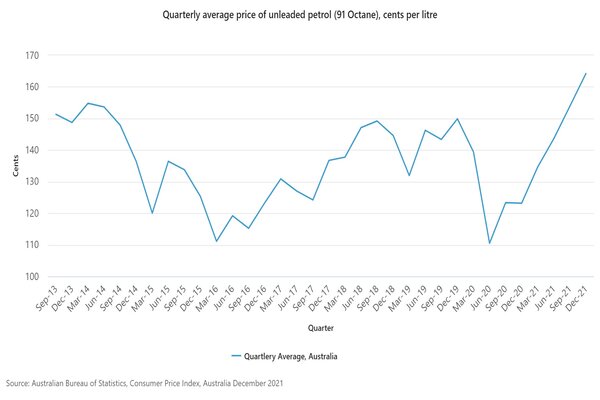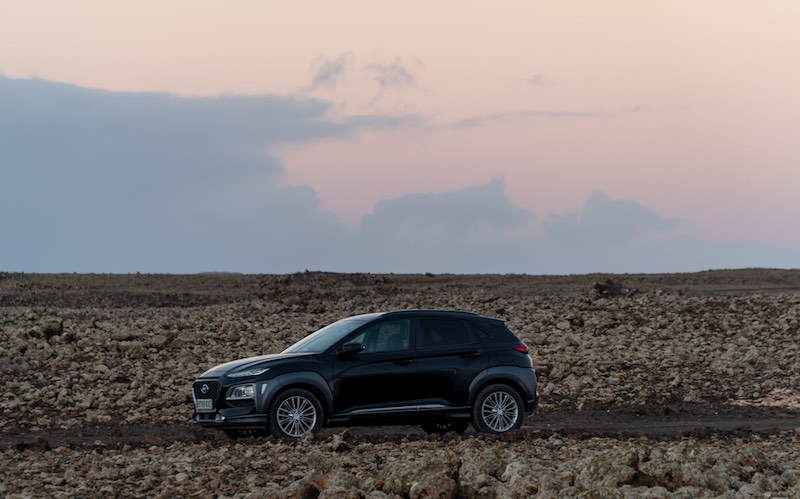The Consumer Price Index (CPI) saw the automotive fuel series reach a record level in the December quarter - rising 6.6% - due to higher global oil prices amid economic recovery and lower global supply.
Across the nation, the average price for unleaded petrol increased to $1.64 per litre in the December quarter.
The growth rate in fuel prices was the highest since 1990, and comes after near record-low fuel prices in 2020 at the start of the pandemic.
On Tuesday the ABS noted that non-discretionary inflation at 4.5% is higher than the overall CPI of 3.5%, and more than twice the rate of discretionary inflation at 1.9%.
Non-discretionary inflation includes goods and services that are essential including food, automotive fuel, housing and health costs, meaning households are less likely to reduce their consumption of these goods and services.
APAC economist at global job site Indeed Callam Pickering said fuel prices continue to rise sharply, up 6.6% in the quarter and up 32% compared with a year ago.
“Rising prices of non-discretionary items always create a headache for households given it can be difficult to reduce those expenditures or substitute to other cheaper products,” Mr Pickering said.
In the RBA’s December 2021 board meeting, inflation was described as “low in underlying terms”.
CommBank's head of Australian economics and market research Gareth Aird said it would not be 'credible' to continue with the current characterisation of inflation as “low in underlying terms”.

Aussies spending $2,000 annually on fuel seek alternatives
Research published Tuesday by car subscription provider Carbar found Australians are spending just shy of $2,000 annually on petrol.
Carbar’s Future Finance and Mobility Report found escalating petrol prices - which hit a seven-year high last year - will see one in three Australians consider motoring alternatives in the next two years including an electric vehicle.
In the survey of 1,000 Australian car owners aged over 21, 68% agreed that the increase in the price of petrol in 2021 has put a lot of strain on their budget, with 36% 'strongly' agreeing.
Further, 34% agreed that the price of petrol and recent increases have made them more likely to consider buying an electric vehicle in the next two years.
This research comes off the back of a bumper year for electric vehicles in 2021, with a near 200% increase in sales annually.
Carbar CEO and co-founder Des Hang said rising petrol prices are encouraging more Australians to look into EVs.
“With many EVs still costing Australians over $40,000 to own, there is some hesitancy,” Mr Hang said.
“More affordable alternatives like subscription products, are filling this gap, but we will start to see real momentum as EV prices start to fall and we grow further awareness in subscription as an alternative.”
See Also: Compare Affordable Electric Cars
In the market for a new car? The table below features green car loans with some of the lowest interest rates on the market for low-emissions vehicles.
Image by PH B via Unsplash.








 Harry O'Sullivan
Harry O'Sullivan

 Brooke Cooper
Brooke Cooper
 Jacob Cocciolone
Jacob Cocciolone

